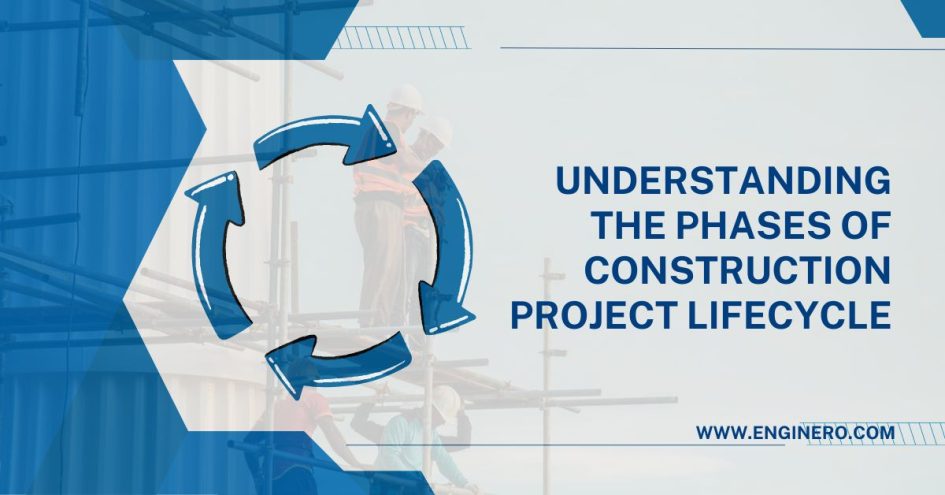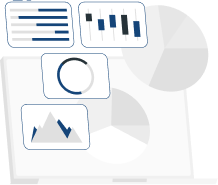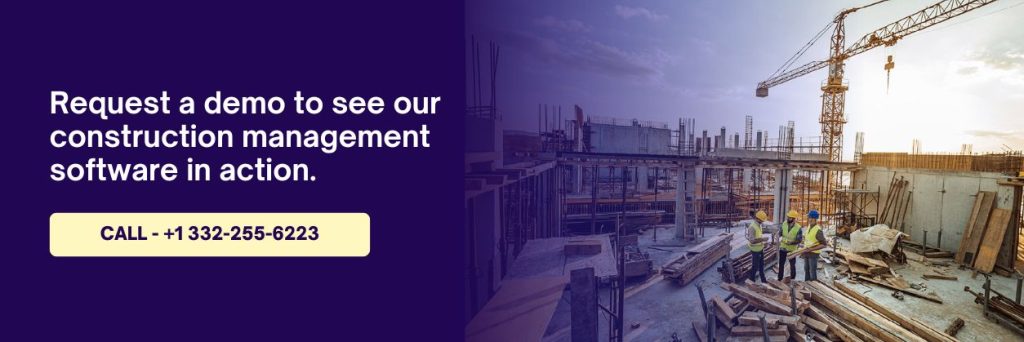Construction projects are diverse in various dimensions: scale, niche, budget, and many more. People involved in these construction projects are also diverse, in their duties and perspectives, but when it comes to executing the Construction project lifecycle, things come under a common canopy.
A proper linear plan with ensured compatibility can catalyze the construction project lifecycle to be more streamlined without hindrances. As the construction industry can be of any size and has diverse project types, here are the six phases of the Construction project lifecycle that stimulate better project evolution.
In this blog, we take a look at the six phases of the construction project lifecycle and the role of dedicated construction management software like Enginero in streamlining all the phases.
Table of Contents
What is a Construction Project Lifecycle?
The cycle of events that take place to complete a construction project is called the construction project lifecycle. These processes can be phases, where each phase has prominence over the project and can passively stimulate it to excellence.
Construction Project Lifecycle phases
Having said that about the construction project lifecycle and the prominence of construction planning, here we drop down the phases of a construction project. These points together form a comprehensive construction project lifecycle.
- Project design
- Project procurement
- Project preconstruction
- Project execution
- Project control
1. Project Design in Construction Project Lifecycle
The first and foremost point of a construction project is to create a proper and well-established design with pre-determined ideologies and aspects of the niche. The size of the project might differ, but that should not affect the prominence given to the design process.
The design created should meet the requirements of all the project members, as they will have a role to play with it in the project flow. In this case, it is important to communicate the project design with all the teams.
A project design will have flaws, and those misconceptions must be addressed first to avoid costly mistakes during the construction process. This eventually saves more time and money for the project unit and ensures credibility. It is also important to compare and analyze the design, and the venue decided to implement this as a project. With a progressive check run, the teams can conclude on either implementing or altering the project design.
2. Project Procurement in Construction Project Lifecycle
Once the project design is finalized, the need for material and resource procurement comes into play. The project delivery method also comes into this picture. The time spent on accomplishing these nodes of the project has significantly dropped ever since technology and digitalization took over.
The stakeholder or the project owner has to decide on the materials to be bagged for construction. At the same time, they should not overorder the materials, which can eventually cause mass waste and cost more money. When it comes to resources, it becomes inevitable to look out for compatible resources with a deeper understanding of the project.
Eminent architects, contractors, engineers, and other professionals must be brought into one place and kept informed about the project and their roles and responsibilities.
3. Project Preconstruction in Construction Project Lifecycle
Upon acquiring the materials and resources for the projects, the general contractors and project managers set the stage for the project elevation. This preconstruction process includes assigning roles to the project teams and scheduling the materials for each part of the construction.
Reading the sites is another important point in construction. As a part of preconstruction, the general contractors, project owners, and site engineers analyze the site and check for any interruptions that can be caused by the site to the project. If anything has been detected, the project holders intervene and resolve the limitations.
Mitigating the risks with the project can be given more importance in the preconstruction phase. As we said earlier, a project will have multiple issues as a plan, but before implementing it as a project, it becomes ideal to read the design and model and eliminate the issues firsthand.
Resources pulled into the project must be informed about their roles in construction. That said, the project managers create a schedule, indicating the specific roles of the teams. This can let them work on a scheduled basis and avoid misconceptions.
4. Project Execution in Construction Project Lifecycle
Project execution is the phase where the real construction starts. In this phase, the preconstruction plans are opened for discussion, and the team members learn about the project and their roles in project execution.
As a part of project execution, the general contractors and project managers manage the procured materials and resources. With proper plans and schedules, resources are distinguished, and they get informed about their crew, reporting deadlines, and comprehensive workflow.
The 2D drawings are changed into 3D plans and are well-framed to be executed in this phase with the recognition of general contractors and project managers.
5. Project Control in Construction Project Lifecycle
Once the construction starts with significant measures of execution, it is now important to ensure the flow of the project is in the right direction. Ideal control over the project avoids misconceptions, reduces flaws, and retards progress.
The project managers and general contractors can have full control over the project by tracking its course. As they have access to the collective data of the project, along with schedules and resources within the project, they can have ideal control over the construction progress and ensure everything is aligned. Here, construction management software will do more for the professionals involved in the project.
Tracking also covers the project’s time frame; the project owners and stakeholders must ensure the progress goes as per the planned time frame. If things do not go as planned, then they can intervene and take the necessary actions.
As a part of project control, the project managers oversee the flow and ensure the quality of progress. They can also revamp the schedule and the time frame to deliver a quality project at the end. However, the professionals would not miss out on the budget aspect of the project and prepare a plan that consumes the pre-determined project budget.
Enginero is a one-stop credible solution for comprehensive project lifecycle management.
The latest trends in the construction industry make it evident that credible innovations and digital aspects can streamline construction projects seamlessly. A solution capable of construction management is what the realm needs to catalyze the construction project lifecycle.
That said, Enginero is one enchanting solution that can encompass the whole construction project lifecycle with streamlined actions and permissions. The solution manages all the phases we listed above and makes the construction project an ideal one.
A centralized space for loading the model and acquiring a 3D view is a benefit of the application. The space allows the project teams to indulge in the project and acknowledge the inner aspects of it.
The resources who are roped into the project can be assigned their roles with this solution, and they will be notified of their responsibilities with the solution. This makes it easy for the project managers to accomplish the pre-determined goals.
Clash detection and issue management with the solution are ideal for project management in construction. Project teams can run clash detection, locate potential clashes with the project, and resolve them to make the model issue-free and significant.
Integration with the cloud spaces is another advantage of the application, as the users can extract the models from the cloud space, load them with the application, and carry on the process.
Enginero as a reliable construction management solution can let the projects embark on controlled, established, dominant, and effective aspects and can have extended lifecycle management as well.





Leave a Reply